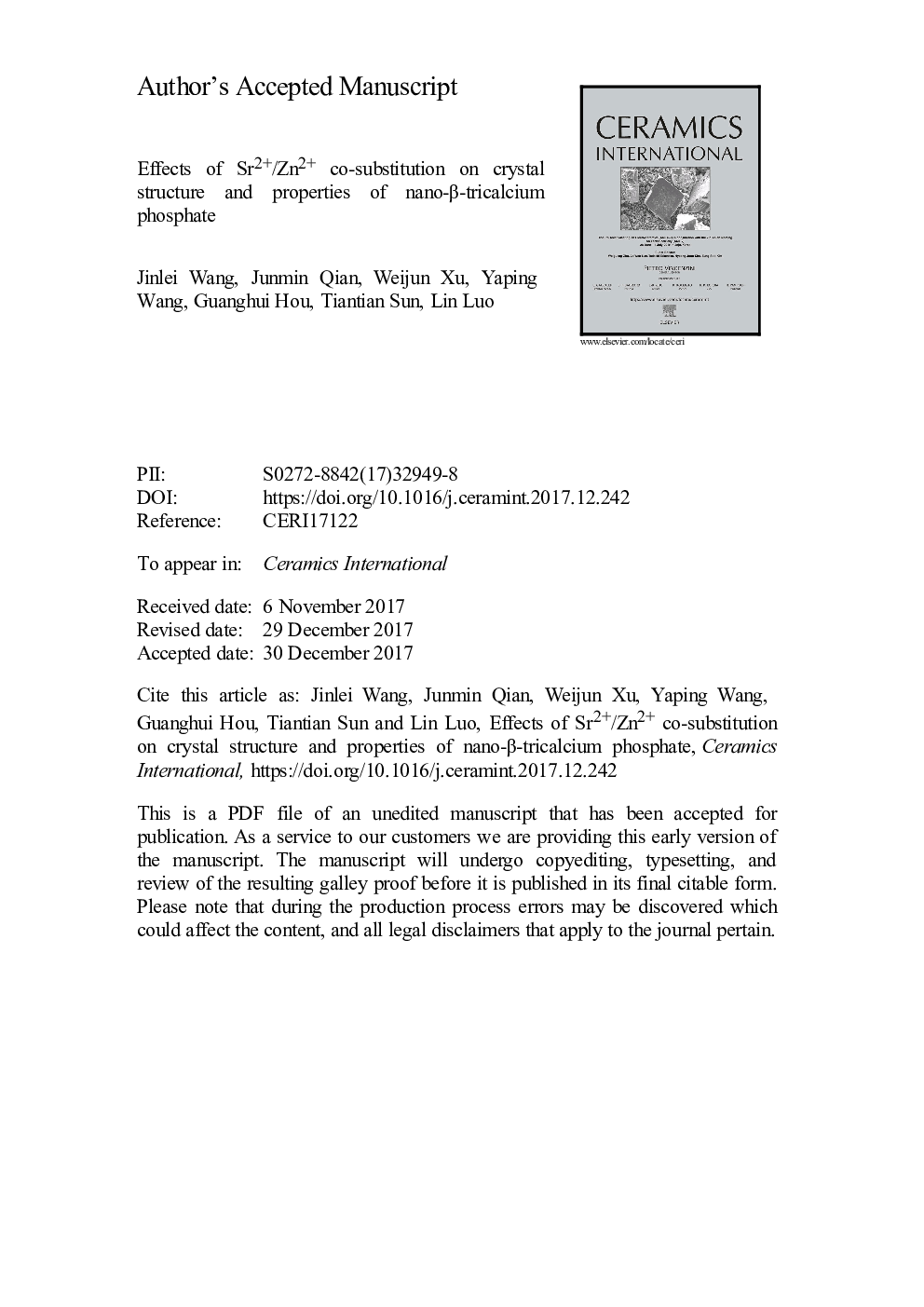| Article ID | Journal | Published Year | Pages | File Type |
|---|---|---|---|---|
| 7887620 | Ceramics International | 2018 | 17 Pages |
Abstract
The incorporation of therapeutic ions like Sr2+, Si4+, Zn2+ and Li+ into biomaterials has become a promising approach to promote bone regeneration. However, the effects of Sr2+ and Zn2+ co-substitution on the crystal structure and properties of β-tricalcium phosphate (β-TCP) have not been elucidated well. In this study, Sr2+/Zn2+ co-substituted β-tricalcium phosphate (SrZnTCP) nano-powders with different extents of substitution (0-4.8 mol%) were synthesized by poly(ethylene glycol)-assisted co-precipitation and subsequent heat treatment. The as-synthesized SrZnTCP nano-powders were characterized by x-ray diffraction, Fourier transform infrared spectroscopy, elemental analysis, Rietveld refinement and differential scanning calorimetry. The results showed that the conversion of calcium-deficient apatite to β-TCP was achieved after heat-treatment above 800 °C. The a-axis and c-axis lattice parameters gradually decreased with increasing level of Sr2+/Zn2+ co-substitution in β-TCP lattice. Sr2+ and Zn2+ preferentially occupied the ninefold coordinated Ca (4) sites and the sixfold coordinated Ca (5) sites, respectively. The co-substitution of Sr2+ and Zn2+ for Ca2+ significantly improved the thermal stability of β-TCP. The release rate of Zn2+ from SrZnTCP depended on Ca2+ concentration over 63-day immersion in PBS solution while that of Sr2+ was not affected by Ca2+ concentration. The amount of Sr2+ released increased with increasing Sr2+ content in SrZnTCP. Collectively, SrZnTCP showed great promise as a Sr2+/Zn2+-releasing biomaterial for bone repair, although no obvious mineralization was observed on β-TCP and SrZnTCP disc samples during 56 days of immersion in simulated body fluid.
Related Topics
Physical Sciences and Engineering
Materials Science
Ceramics and Composites
Authors
Jinlei Wang, Junmin Qian, Weijun Xu, Yaping Wang, Guanghui Hou, Tiantian Sun, Lin Luo,
